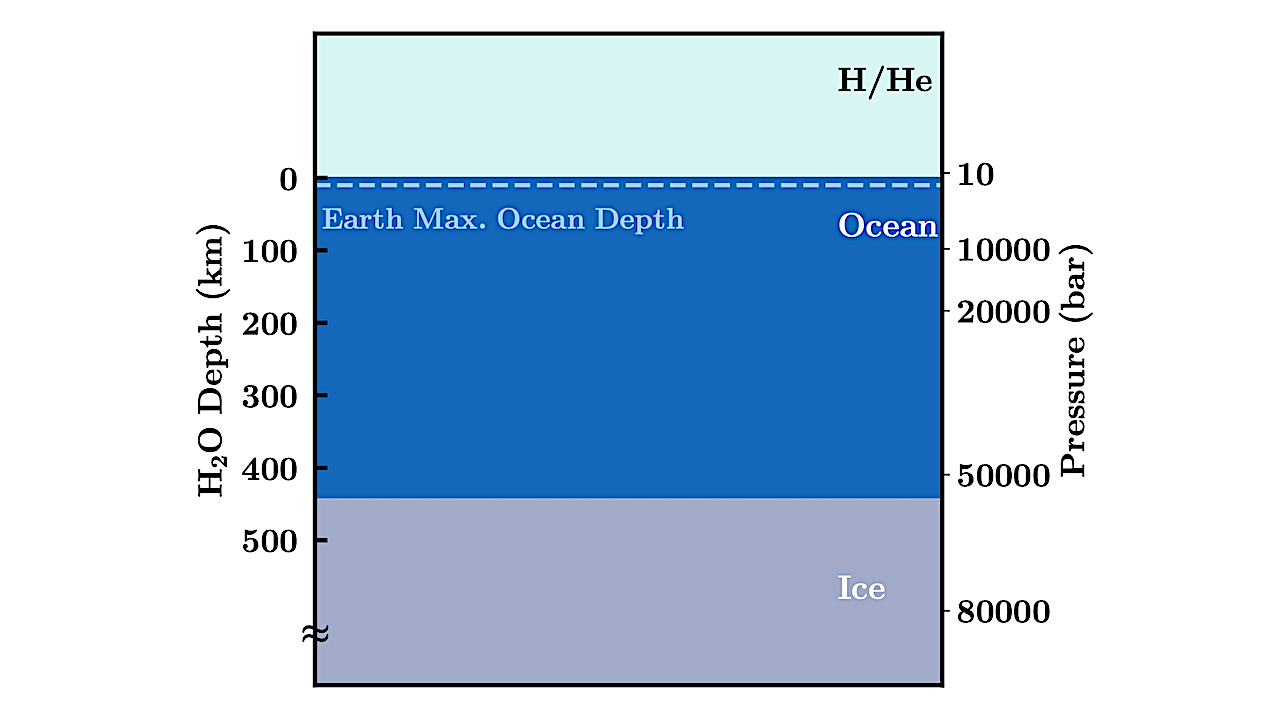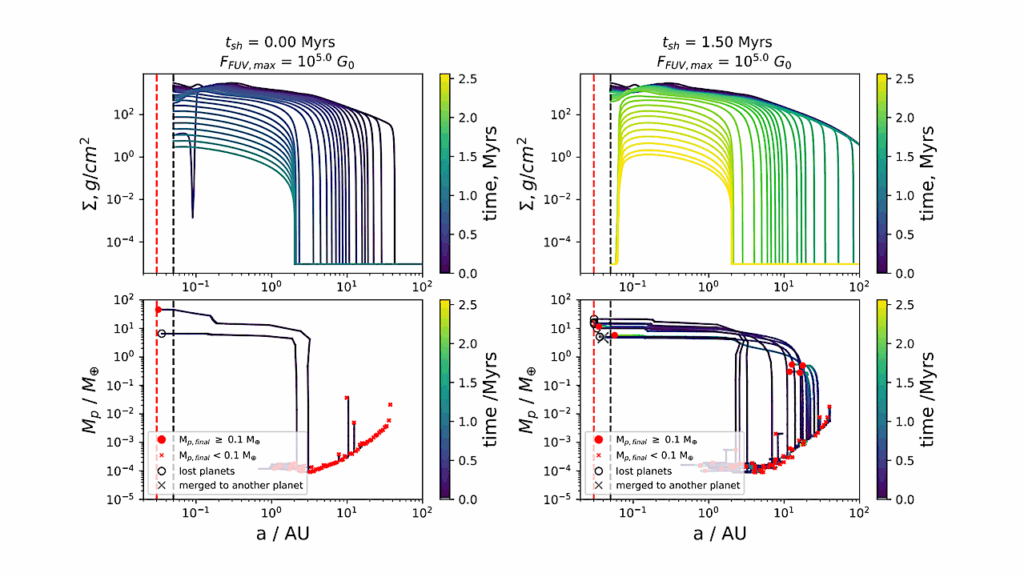On The Ocean Conditions Of Hycean Worlds

Recent studies have suggested the possibility of Hycean worlds, characterised by deep liquid water oceans beneath H2-rich atmospheres.
These planets significantly widen the range of planetary properties over which habitable conditions could exist. We conduct internal structure modelling of Hycean worlds to investigate the range of interior compositions, ocean depths and atmospheric mass fractions possible. Our investigation explicitly considers habitable oceans, where the surface conditions are limited to those that can support potential life.
The ocean depths depend on the surface gravity and temperature, confirming previous studies, and span 10s to ∼1000 km for Hycean conditions, reaching ocean base pressures up to ∼6×104 bar before transitioning to high-pressure ice. We explore in detail test cases of five Hycean candidates, placing constraints on their possible ocean depths and interior compositions based on their bulk properties. We report limits on their atmospheric mass fractions admissible for Hycean conditions, as well as those allowed for other possible interior compositions.
For the Hycean conditions considered, across these candidates we find the admissible mass fractions of the H/He envelopes to be ≲10−3. At the other extreme, the maximum H/He mass fractions allowed for these planets can be up to ∼4-8%, representing purely rocky interiors with no H2O layer. These results highlight the diverse conditions possible among these planets and demonstrate their potential to host habitable conditions under vastly different circumstances to the Earth.
Upcoming JWST observations of candidate Hycean worlds will allow for improved constraints on the nature of their atmospheres and interiors.
Frances E. Rigby, Nikku Madhusudhan
Comments: Accepted for publication in MNRAS
Subjects: Earth and Planetary Astrophysics (astro-ph.EP)
Cite as: arXiv:2402.12330 [astro-ph.EP] (or arXiv:2402.12330v1 [astro-ph.EP] for this version)
https://doi.org/10.48550/arXiv.2402.12330
Focus to learn more
Submission history
From: Frances Rigby
[v1] Mon, 19 Feb 2024 18:01:56 UTC (2,050 KB)
https://arxiv.org/abs/2402.12330
Astrobiology,








